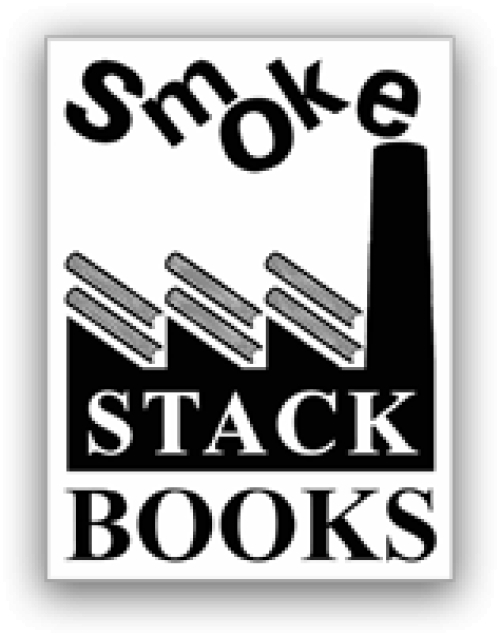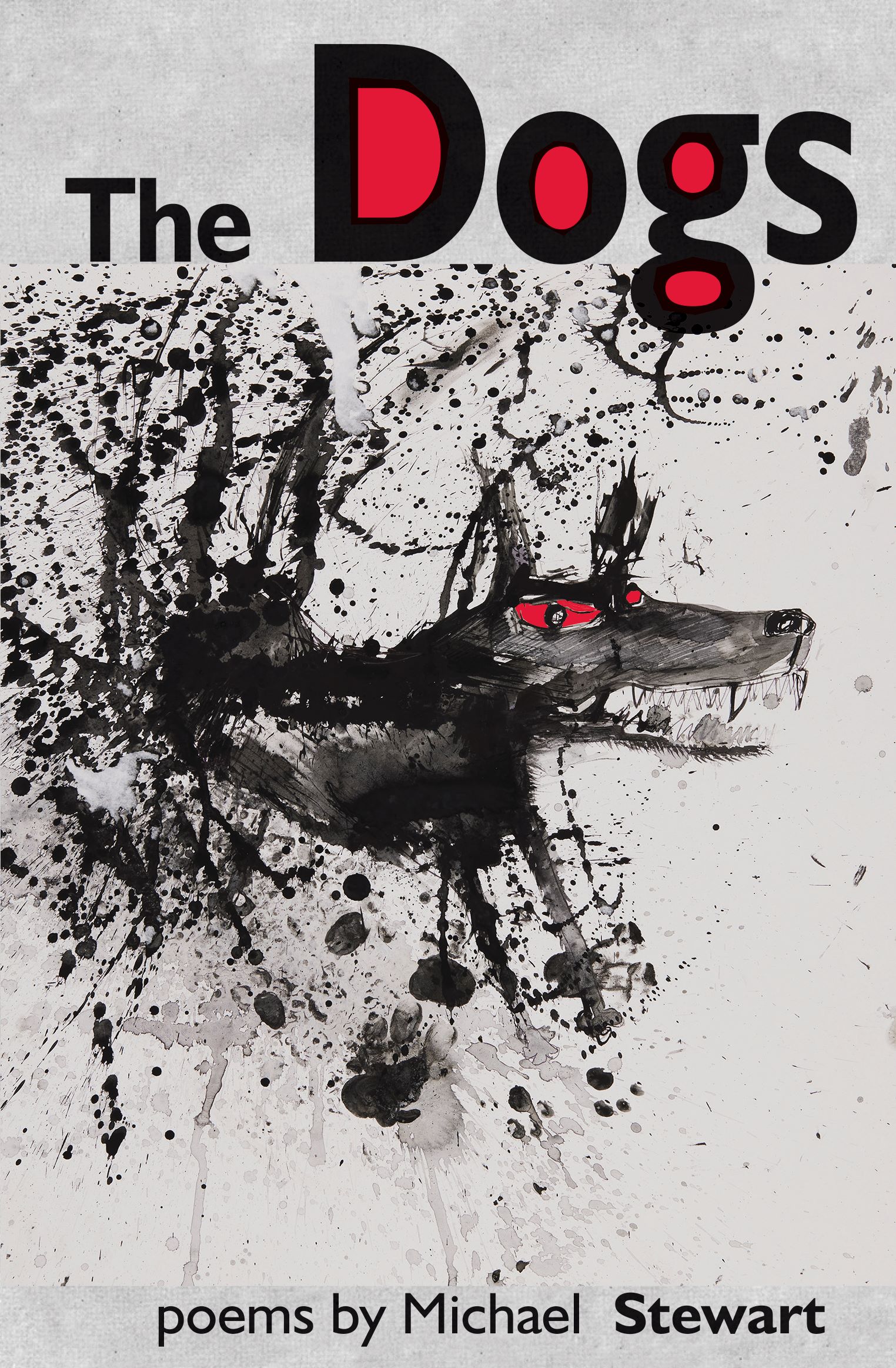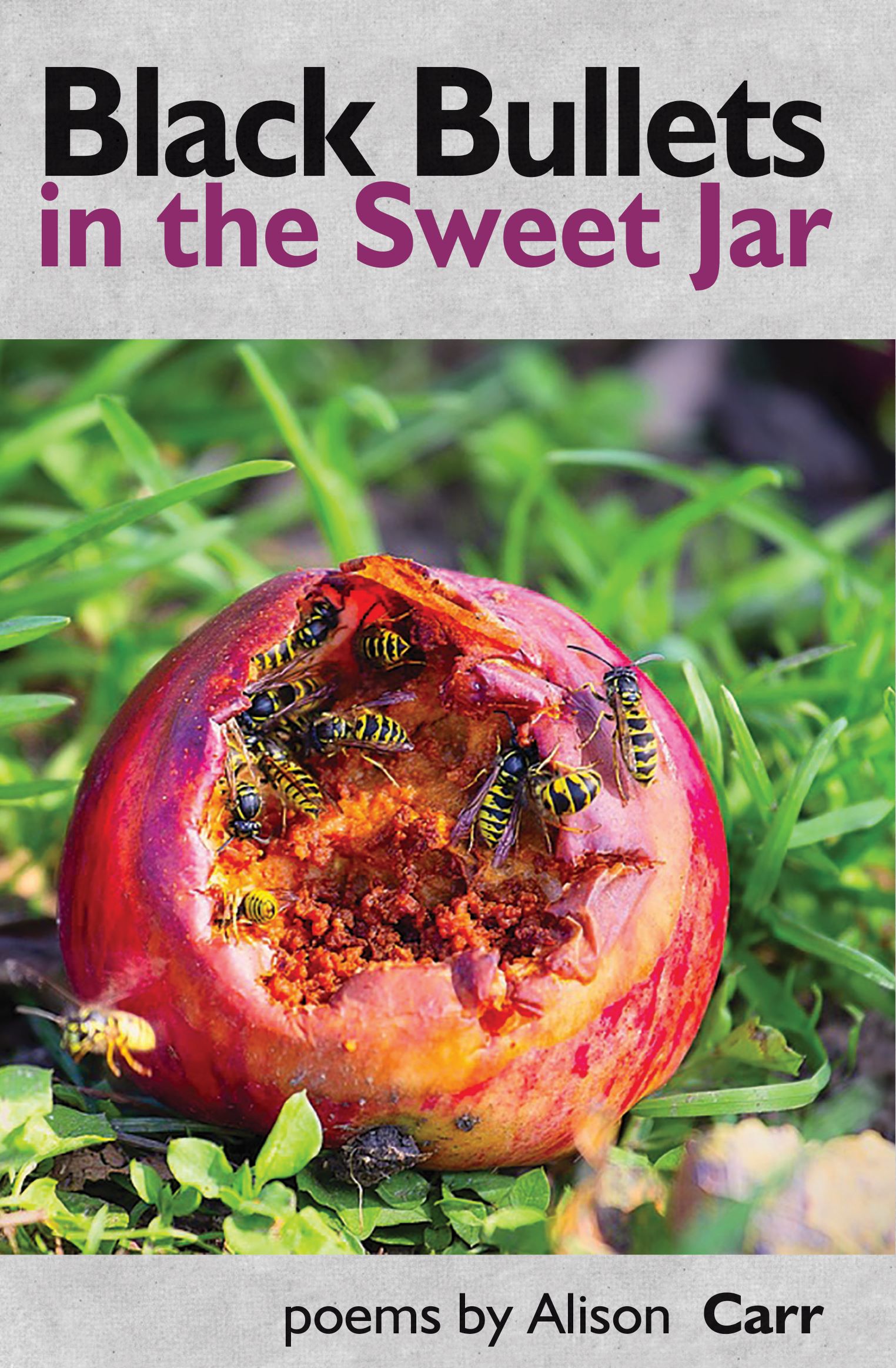Review of 'The Dogs' and 'Black Bullets in the Sweet Jar'

Nick Moss reviews two new books from Smokestack: The Dogs, by Michael Stewart, and Black Bullets in the Sweet Jar by Alison Carr
Michael Stewart’s The Dogs is the product of a wretched encounter. A daily walk took him past a scrapyard where a guard dog, chained, was neglected and abused. Stewart is tormented by the encounter but can find no solution to the dog’s plight. One day the dog is gone, but weeks later a younger dog has taken his place. The book “is dedicated to the dog of Low Lane, and all the dogs around the world that never experience warmth, adequate shelter, or comfort.” The poems form a tripartite sequence. The first part sets out an origin myth of and for dogs; the second looks at the exploitation of dogs today, and their abuse through dysgenics and “pure” breeding; the third imagines an uprising with two movements, one non-violent (The UnderDogs) and the other a violent splinter group (De UberHund) demanding autonomy from humans. The book is illustrated by Louis Benoit, whose artwork captures the surreal, macabre plight of the dogs Stewart portrays.
In the first section, Parados, Stewart shows how “feral dogs running wild amongst people” come to be “blind and hobbled” (Dog Is Life) and there is the first intimation of the rebellion to come , with the call to:
Bite the hand that feeds,
growl,howl, hiss,
bark yourselves hoarse,
shit in their sacred places.
Dog comes to enter into a cursed bargain with man. In “Xoloitzcuintli” , dog is flattered to “serve as a guide to the dead as they make their way from this world to the next.” But the honour to serve man comes with a grim codicil “You must accompany the dead through your own death. And afterwards , we will eat your flesh.” Stewart relays how man’s violence becomes a weapon of control:
If Dog barked too much
or if he didn’t bark enough
the Man whipped Dog.
(The Man.)
Dog’s plight is captured in the description of Turnespete, the name given to a short-legged, long-bodied dog bred to run on a wheel to turn meat :-
Turnspit Pete, Turnspit Pete
Will they toss you crumbs to eat?
Will they give you snout and feet?
Or will you die before your treat?
(Turnspete)
As with all forms of exploitation and domination, the relationship is determined by the fact that the outcome is in one sense always open - there is always the possibility, amidst the crush of abuse, that you’ll get the “crumbs to eat.” The relationship between man and dog, master and servant, is thereby trained, not simply and brutally imposed.

The second section, Stasimon, gives us dog as dog lives now. The pubs that say No Dogs No Dogs No Dogs, the dog that “gets a kick for blinking (Bill’s Dog), the brachycephalic pugs and French bulldogs bred so that:
Sometimes during exercise
He collapsed
But isn’t he cute, they said.
Isn’t he just adorable?
(Brachycephalic.)
Stewart’s writing takes on a scabrous rigour as the book progresses, with sections that resound with an anger captured in a mix of poetry and prose that suggests Louis-Ferdinand Celine dragging Alan Garner into a dark wood.( “Go to the pain” as Garner suggests, “go to where it hurts the most, and say whatever it tells you” .) At various points, “Jimmy Saville appeared in a pink shell suit and a string vest and said , Now then, now then, guys and galls. Uh-uh-uh-ughhh. Then went to Stoke Mandeville hospital to do some voluntary work...Fiona Bruce, wearing a straitjacket and a crazed grin, kept interrupting everyone with leading questions.” (Ouroboros.) The Gap Band and Cliff Richard’s butt plug both make appearances. Briggite Bardot’s animal-welfare-meets-Islamophobia campaigning is met by dog responding with Allahu Akbar (Pluto’s Square) and finally we come back to the guard dog from Low Lane:
This dog’s no good, they said
And beat him with an iron bar.
They smashed every bone in his legs,
Threw him in the back of a Nissan
Drove him to an abandoned farm
And chucked him down a well.
(Guard Dog.)
Stewart’s book is a fiery indictment of cruelty, to animals, and also of cruelty to refugees, to poor families queuing at food banks, to all those shackled and crushed by austerity and the swindles and sweat-stealing of capitalism. In the book’s final section, Exodos, the dogs rise up and “eat the hearts of men”:
“Is it good “? The wayfarer asked
“No,it’s like the hearts of all men.
They are tough to chew and taste of nothing.”
(The Hearts of Men.)
In the flux of revolution, the dogs unleash the turning-upside-down of man’s world:
Let the horizon’s hills
Heap as high as haystacks with the heads of dead hipsters ,
Make the sky black with drones
(The Dogs of War)
Dog hails “the death of peace” , and the dogs go:
...Fucking and eating
Everything that breathes
Shitting in your streets
Pissing on your trees
(The Dogs Are Laughing.)
The gates of the Kennel Club are stormed, and the eugenicist /dysgenecist logic of dog-breeding is linked back to Hitler reading Charles Davenport while incarcerated at Landsberg, with the eugenicist Davenport also inspiring Kennel Club founder Sewallis Shirley, and tail-chasing of all this coming then to the zoosadism and “sink the small boats” racism of today. The only way to break the shackles, to enter “the Land of No” is to celebrate “heterosis/ all hail hybrid vigour, they barked/ all hail Rassenschande.” By refusing to be a “parade of mutants”, dogs:
“...made a heap
Of muzzles and leads
As high as a hayrick
Then set fire to it.”
(When the Dogs Found Out What Adolf Learned in Landsberg.)
Stewart gives us no easy way out from this circular logic of abuse and exploitation. The dogs have their revolution, they free themselves of “the middleman /who sits betwixt dogs and god” but the UberHund is described as a monster dressed temporarily as an insurrectionist:
His chest was bare of fur and cloth
His flesh was ripped with pecs and recs
Arms linked with occult symbols
Wearing black leather trousers
And biker boots
Head sniped like a jackal’s
(Der Uberhund)
There are, after all the blood and piss and shit, no guarantees. In Dog’s Final Testament, Dog tells us “I/ kan /not/ fix/ the/ blak/ hole/ in/ yure/ soul/by /fetchin/ball. Yure/on/yure/own/now/pal.” Stewart wants us to have to face all of the implications of that fact.
The loss of childhood
Alison Carr’s Black Bullets in the Sweet Jar is, in part, a study of the loss of childhood. The writer was knocked down by a hit and run driver at the age of eight, and the poems engage with the sense she had of being suddenly expelled from childhood. But the poems are, in fact, more ambiguous than that, and the trauma of the hit and run isn't the only mechanism by which childhood comes to be made mutable. The book opens, though, with Arrival, which deals directly, and unsparingly, with the hit and run that makes being alive as if:
Pebbles bounce on the shell of my mind
Like gravel stirring my concrete thoughts.
(Arrival)
The awareness of someone cutting into her shaved head - “Thick fingers fiddle with brain tissue/Blood mesh/His bear-like hands/sieve through my mind” - the sense of hands in antiseptic gloves physically sifting “concrete thoughts” - is jarring, as if the hit and run has knocked mind and body out of joint.

Carr 's work captures exactly the elusive, slowly-darkening magic of childhood “the soft pages/Of fairy tale books”, (The Old House of Childhood) the “sherbet twists...the dark taste of liquorice /Purpling lips like a punch in the mouth.” Every memory recalled has a shadow of menace that never quite intrudes but remains always present, just out of view. In Daisy Chains and Nettle-Stings, she writes:
Grubby knees, orchard trees,
Throwing pebbles, bouncing balls
The fizz, the surprise
Of Dandelion and Burdock
and recalls a “future bright as crocuses.” Always left open, though, is whether the optimistic scenario of “Dandelions/counting time/Holding hopes. Yours. Mine” can come to pass, or whether the nostalgia for childhood is a nostalgia for possibility lost. In Playground:
Bright ribbons in the girls’ hair
Powder-shot brilliant sunshine
We all fall down
that “falling down” is the crashing to earth of a dream.
Like Adrian Henri, and with the dark tone which flickered always around the wit in Stevie Smith’s works, Alison Carr’s writing has an earthy, grass-stained surrealism, there in that “powder-shot brilliant sunshine”, and in the “Hope rolls away like a marble” that is the rueful essence of all of the poems here. (Promises.) The sweetie jar on the top shelf is always just out of reach (Bullet) but there is still, for a while, “Youth’s crispiness in my mouth /Adventure on my tongue.” (Tuckshop). Halcyon Liquorice gives us:
Sweet sunshine days
Staring at the sugar-cane windows
...and the rhythm and the reminiscence both take me back to Henri’s In the Midnight Hour, the hand “held for a moment among the dripping trees” and Carr tells us of the “Swan on the water/Rippled rainbow light / Calm the leaping summer spirit/Of childhood” (Slow Things) and all those possibilities are there again, ripe, but not yet over-ripe and gone to rot. When the rot comes, though, Carr is unsparing:
Honey sweet afternoons are gone.
The hives attacked.
The honeycomb bitter.
(Sweet Afternoons.)
Soon enough,”The Dandelion and Burdock has gone flat” (Birthday Parties) and we’re left with:
Childish bubbles
Sky blue sunshine
Draining down the plughole.
(Bathtime)
Time kills hope, and adolescence hacks away at childhood innocence. Finally, Carr tells us:
But secondary school has other girls
Groups who taunt, play by other rules
Who know how to scratch
Put a match
To my childhood.
(But)
The sequence is followed by a group of poems that work away at the myth of the fall (singing to the serpent/The teeth – marked core lies on the grass (Bounty)) and a feminist awakening from the naivete of youthful hope, the “rosy globe of promise....
...is not as sweet as it looks
Poisoned to the core
It will pull her down to cinders and dry ash.”
(Heavenly Bite)
She wears a dark veil
In a vale of tears
Wet pearls on her face.
(Expelled)
The awareness of misogyny and the passing of youthful friendships is joined with an awareness of finitude - “Everyone born changes to a curled corpse” (Heavenly Bite) - the blighted knowledge that whatever we dream, we all end up the same, which marks the ultimate passing of childhood:
We may be born in a clearing
But we die in the forest
Dim light closing in
(Forest.)
Carr then works through the myths of the crashing to earth of Icarus and the fall of Lucifer - "Collapse of innocence...When you swat a moth / All you are left with is dust on the wall" (Lucifer) before turning to the process of evolution , the “Squashed ape under the sky’s turmoil/ Struggling from the boiling river” (Evolution) , a struggle resulting not in steady progression, no hopeful teleology, but what may be a biological dead-end “The lizard slithers /Out of the river / And stands in the dirt/ In an Armani shirt.” (Slime)
Carr follows these with a series of exquisite melancholy, autumnal haiku, a typical example of which is Apple:
Hanging fruitfulness
A hollow skull
Wasps gather.
All of these effectively capture that essence of autumn –the decay and the growth, the sense of potentialities amidst the rot. The poems turn then to examine the decline and decay of industry and of a hopeful working-class life:
In the wasteland of growing up
Time ticks like a bomb
The tap drips
(Wasted)
Always the dust-pocked windows
The grind of grit, dust.
Metal riot, metal riot. Rust.
(Always.)
Part of the key to building a better future, is the preservation of historical memory,in the face of the death of childhood’s hopes and the crushing of the possibilities there in the class battles of an earlier time ; not just on banners, or in documentary form, but as a living language of possibility, away from the museum and the archive - “Confined/consigned to a shiny museum” (Gleam). Carr gets this and looks for ways of writing towards it:
But this town still remembers
The fire-breathing industry
Dragon-lunged locomotives
(Slowed)
Spikes on the heart monitor
The hospital is slowly closing down
This town is nearly dead
(Nearly.)
But “nearly” is not-yet-dead. Carr is unillusioned enough to keep reminding us that:
The nightingale that sang
On hope’s high branches
Has lost its song
(Song)
.....but in the act of writing these poems she is proving that it remains possible to keep on singing out. There are moments though towards the book’s end when she appears entirely despairing:
Set a match to the worthless bonfire
Of my life
(Taxed)
.....but even when she cries that “I want to be something else” the cry still resonates with hope - “A soap bubble of childish magic...I long to be a butterfly” (Struggling). Seen again in the autumnal is the chance of light and growth:
I want the day back, the copper brushing leaves of light
The crunch and whisper of the grass
The green damp sunlight.
(I Want)
In the end, Carr recognises, “We live in deeds, not years/In feelings, not in time.” If we are to be judged for what we do and how we lift and carry those around us, then pessimism and stasis just collude with the “figures on the dial.” (Chilled.) These are quietly profound, beautifully-composed poems which combine a sharp realism with a bracing, hard-fought-for, optimism. In one of the book’s final poems, Rage, Carr sets out what might be called the aesthetic purpose of her poems and of Smokestack Books more generally: to challenge a prevailing mood in contemporary literature, a contemptuous turning away from working-class voices, whether they talk of beauty, or dirt, or revolution:
They slam the book shut
So they don’t have to see
Anything that doesn’t agree
With their idea of perfection.
Both books are available here.

